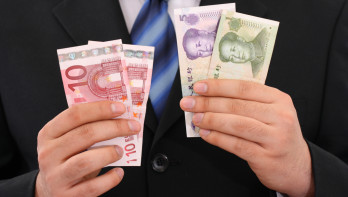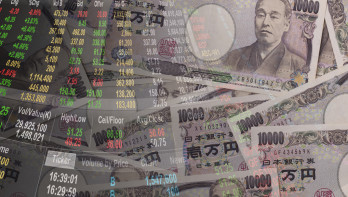Opinion Joost Derks
Mainly a lot of division behind Brics currency plan
A group of emerging countries such as Brazil, Russia, India, and China introduced their own currency last week. As long as the group mainly agrees on what they do not want, the position of the dollar and euro is not at risk.
It does send a signal when a bloc of countries with 45% of the world's population and a combined contribution of over a quarter to the global economy tries to sideline the dollar. That is exactly what happened last week at the Brics summit in Russia. Brics stands for Brazil, Russia, India, China, and South Africa. This quintet represented the face of the emerging world in previous decades. Since then, the group has expanded to include countries like Iran, Egypt, and Saudi Arabia. Turkey and Malaysia are still in the waiting room. Despite the considerable population and economic size of the Brics group, the plans to sideline the dollar are doomed to fail.
Lack of credibility
Firstly, the interests of the emerging countries diverge so much that it becomes very difficult to pursue a credible joint policy. Russia is mainly looking for ways to escape Western sanctions. China wants to expand its geopolitical power base, and India wants to participate in various places from a neutral position to enhance its own economic growth opportunities. A second reason why the Brics currency cooperation has little chance of success is that host Russia is acting from a position of weakness rather than strength. This is also evident from the host country's call to delegations of participating countries to bring hard currencies such as dollars and euros.
Inaccessible reserves
Mastercard and Visa credit cards have ceased operations in Russia after the outbreak of the war in Ukraine. The country is in dire need of foreign currencies. On paper, the Russian central bank has reserves in foreign currencies of over €600 billion. However, due to Western sanctions, more than half of those reserves are currently inaccessible. There seems to be little sign of the financial turmoil in Russia in the currency markets. The value of a ruble has been fluctuating around the level of a euro cent for at least a year. But because the trading of rubles is restricted, one should not read too much into that exchange rate. It is a sign that the Russian central bank raised the policy rate to 21% last week. This is the highest level in decades.
Economic pain is being felt
With that rate hike, the central bank is trying to curb inflation, which has surged to over 9%. A significant reason for this high inflation is the severe labor shortage. Due to a large number of men aged up to 30 being called up for the army or fleeing the country to avoid conscription, unemployment has dropped to around 2.5%. The economic pain resulting from the war in Ukraine is increasingly being felt in Russia. A higher policy rate or a high-profile Brics summit will not change that. And the ruble? As soon as President Vladimir Putin loosens the reins on the currency front even slightly, that currency will plummet so hard that Russia will have other things to worry about than developing a Brics currency plan.

Joost Derks
© DCA Market Intelligence. Op deze marktinformatie berust auteursrecht. Het is niet toegestaan de inhoud te vermenigvuldigen, distribueren, verspreiden of tegen vergoeding beschikbaar te stellen aan derden, in welke vorm dan ook, zonder de uitdrukkelijke, schriftelijke, toestemming van DCA Market Intelligence.



